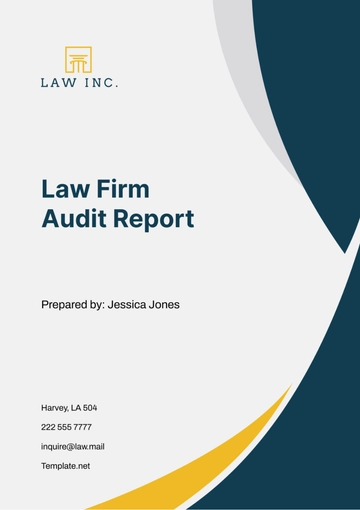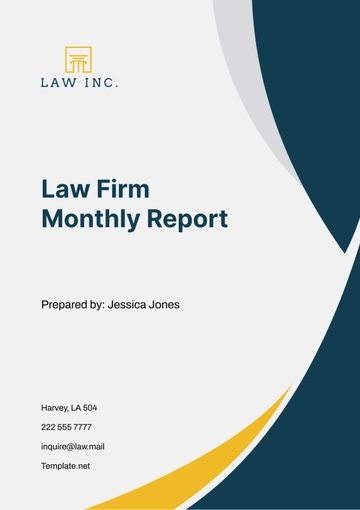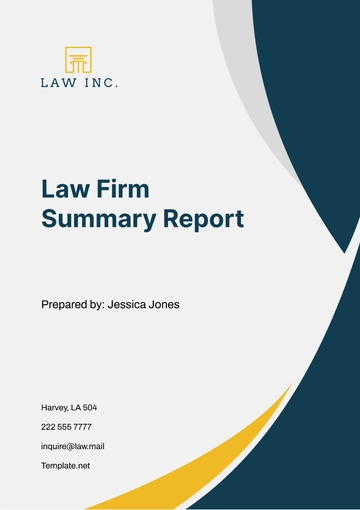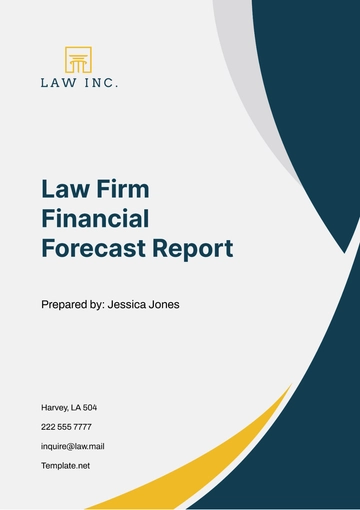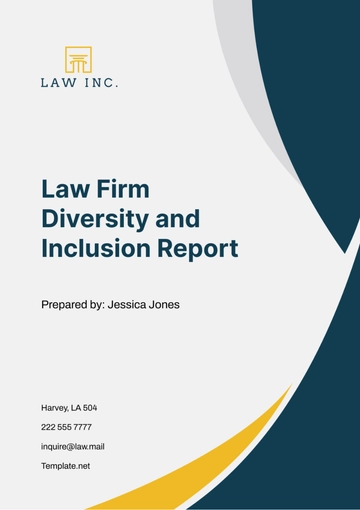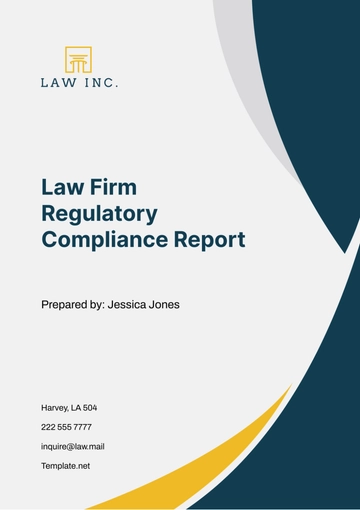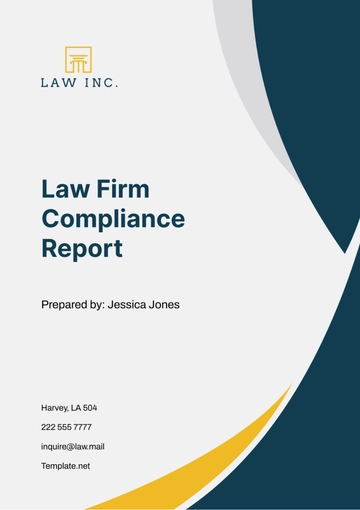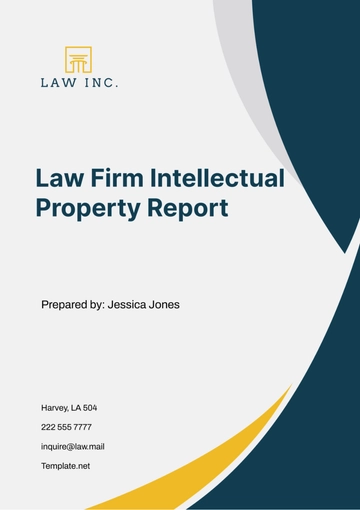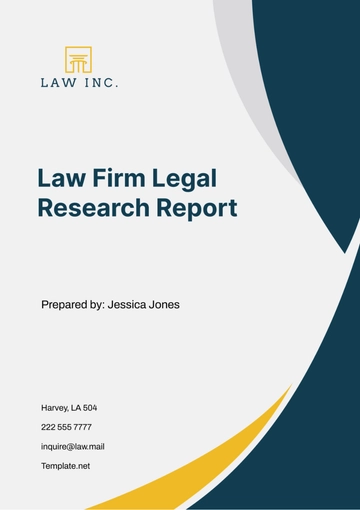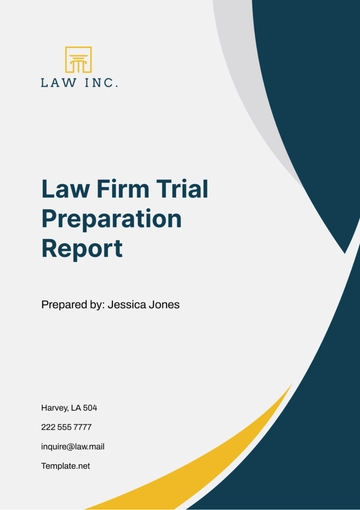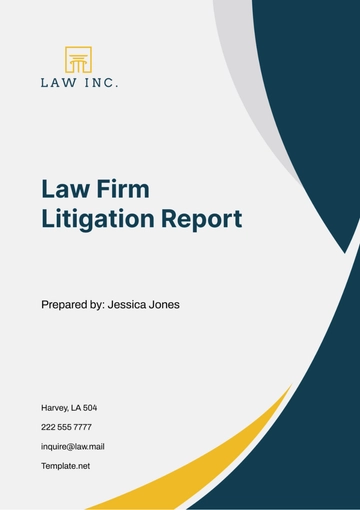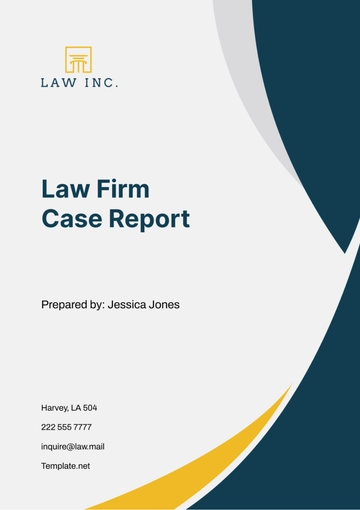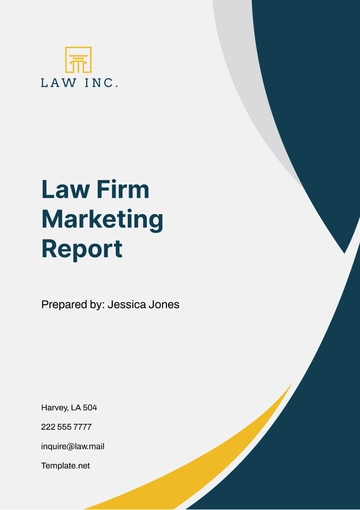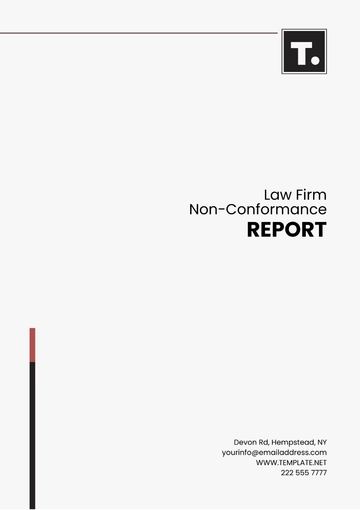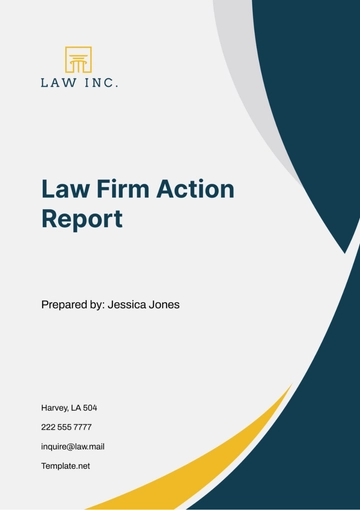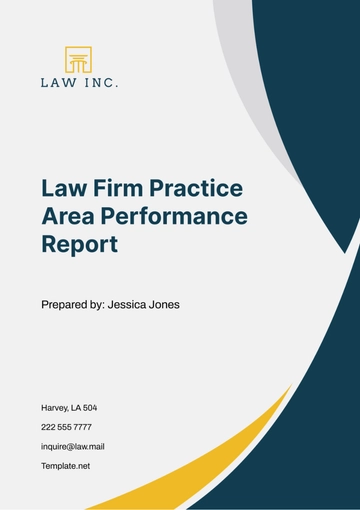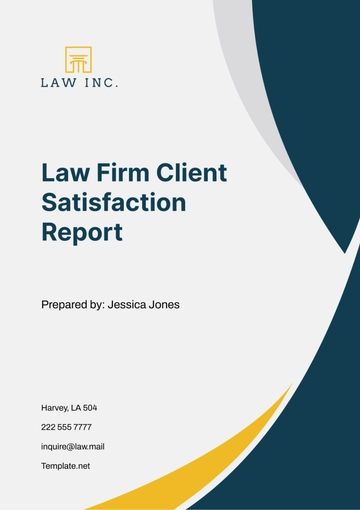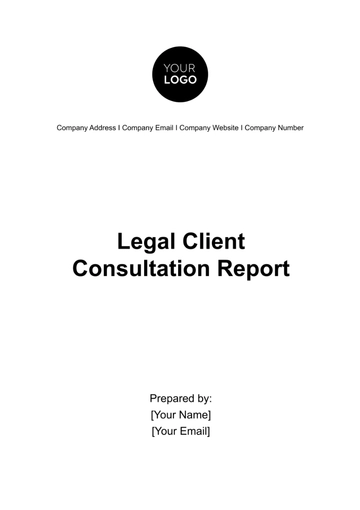Free Law Firm Non-Conformance Report

I. Executive Summary
This Non-Conformance Report for [YOUR COMPANY NAME] presents a detailed examination of discrepancies where the firm's practices did not align with established standards or regulatory demands over the reviewed period. It is essential to identify these gaps to mitigate associated risks and prevent recurrence, thereby preserving the firm's reputation and enhancing compliance and operational effectiveness.
The purpose of this report extends beyond merely identifying non-conformances; it also aims to establish robust corrective actions and develop preventive strategies to ensure these issues do not reoccur. The insights detailed herein are designed to inform management decisions, reinforcing a culture of compliance and continuously improving service delivery to our clients.
II. Description of Non-Conformances
This section outlines each identified non-conformance, providing insights into the nature of the issue, its context, and the associated potential risks.
Table: Summary of Non-Conformances
Category | Incident Description | Detection Method | Potential Risks |
|---|---|---|---|
Client Confidentiality Breaches | Unauthorized access to client data due to inadequate security. | Routine internal audit on [Date]. | Loss of client trust, legal penalties, reputational damage. |
Failure to Meet Legal Filing Deadlines | Delays in filing legal documents post-deadline. | Review of case files from last quarter. | Fines, client dissatisfaction, adverse judicial outcomes. |
Non-Adherence to Internal Compliance Protocols | Staff bypassing new compliance checks for case documentation. | Compliance officer's random checks in [Month/Year]. | Regulatory infractions, compromised case integrity. |
These instances of non-conformance highlight significant areas of concern that require immediate attention to prevent further legal and reputational risks.
III. Analysis of Root Causes
Understanding the root causes behind the non-conformances is crucial for devising effective corrective measures. The analysis has identified several key factors contributing to these issues:
Inadequate Staff Training: Investigations revealed a significant gap in employee training, particularly regarding the updates in compliance protocols and security measures. Staff were either unaware of new procedures or inadequately trained to implement them effectively, leading to potential breaches in client confidentiality and compliance.
Systemic Failures: The firm's current document management systems are outdated and no longer capable of supporting efficient legal document handling and security. This systemic inadequacy has directly contributed to failures in meeting legal filing deadlines and protecting sensitive client information.
Operational Oversights: There is a noticeable lack of rigorous oversight by department heads, especially concerning adherence to internal compliance checks and monitoring of critical filing deadlines. This lack of supervision has allowed lapses in compliance to go unchecked, exacerbating the risk of non-conformance.
These root causes suggest a pattern of oversight failures and systemic inefficiencies that necessitate comprehensive strategic reforms. The following steps are recommended to address these foundational issues:
Enhanced Training Programs: Develop and implement a comprehensive training program tailored to the specific needs of staff at all levels, focusing on the importance of compliance, security protocols, and efficient case management procedures.
System Upgrades: Invest in modernizing document management systems to ensure they are capable of handling current and future legal document requirements with enhanced security features.
Strengthened Oversight Mechanisms: Institute more stringent oversight procedures, including regular audits and performance reviews, to ensure all department heads are actively monitoring their team’s adherence to protocols and deadlines.
By addressing these root causes, [YOUR COMPANY NAME] can significantly reduce the risk of future non-conformance, thereby improving the firm's overall compliance posture and operational effectiveness. These measures will also reinforce the firm's commitment to upholding the highest standards of legal practice and client service.
IV. Corrective Actions and Recommendations
To effectively address the non-conformances identified, [YOUR COMPANY NAME] has developed a comprehensive plan of corrective actions and strategic improvements aimed at mitigating risks and preventing future issues. These measures are meticulously designed to strengthen the firm's operational structures and enhance compliance across all departments.
A. Enhance Security Protocols
Action Items:
Implement an upgraded secure document management system: This system will feature enhanced security measures, including advanced encryption and multi-factor authentication, to safeguard sensitive client information effectively.
Conduct bi-annual security training for all employees: These training sessions will cover best practices in data handling, recent security updates, and response strategies for potential data breaches.
Responsible Parties: IT Department and HR Department.
Timeline: Completion expected by the end of Q2 [Year].
B. Improve Case Management Procedures
Action Items:
Develop a new case management checklist that includes deadline alerts: This checklist will be integrated into our case management software to ensure all team members are alerted to upcoming filing deadlines.
Appoint case managers to oversee compliance with filing deadlines: These managers will be responsible for ensuring that all cases are reviewed and processed in accordance with statutory requirements.
Responsible Parties: Litigation Department Heads.
Timeline: Implementation within the next 60 days.
C. Strengthen Compliance Monitoring
Action Items:
Increase the frequency of compliance audits from semi-annual to quarterly: This will allow for more frequent reviews of departmental practices and quicker correction of any deviations from standard protocols.
Implement spot checks by the Compliance Officer: To randomly inspect various departments ensuring ongoing adherence to compliance measures.
Responsible Parties: Compliance Department.
Timeline: Effective immediately, with the first enhanced report due at the next quarterly review.
V. Follow-Up and Monitoring
The success of the corrective actions implemented is contingent upon robust follow-up and monitoring procedures. [YOUR COMPANY NAME] commits to several follow-up measures to ensure these corrective actions achieve their intended outcomes and foster an environment of continuous improvement.
Regular Updates:
Monthly status reports: These reports will be provided to Senior Management detailing the progress of the corrective actions, highlighting any challenges faced and adjustments made. This ensures management remains fully informed and can provide strategic guidance as needed.
Effectiveness Reviews:
Review schedule: Every corrective action will undergo a detailed review six months after implementation. This review will evaluate the effectiveness of the action, measure its impact on the relevant non-conformance issue, and determine whether additional adjustments are necessary.
Review criteria: Effectiveness will be judged based on improved compliance rates, reduced non-conformance incidents, and feedback from department heads and staff.
Ongoing Training:
Continuous training sessions: Scheduled regularly, these sessions will reinforce the importance of strict compliance and adherence to internal protocols. Training will be updated to reflect any new regulatory changes or internal policy adjustments.
Training feedback: Attendees will be encouraged to provide feedback on training sessions, which will be used to improve future training content and delivery methods.
The follow-up and monitoring phase is critical to solidifying the changes made and ensuring that improvements in procedures and protocols have a lasting positive impact on [YOUR COMPANY NAME]. Through diligent application and regular review of these strategies, the firm aims to uphold its commitment to excellence, compliance, and client satisfaction. These efforts are designed not only to address current non-conformances but also to lay a stronger foundation for the firm's future operations and reputation management.
VI. Conclusion
This Non-Conformance Report underscores critical areas where [YOUR COMPANY NAME] has failed to meet its standards and regulatory requirements. The detailed analysis and the outlined corrective actions are steps towards rectifying these issues, preventing future occurrences, and maintaining the high standards expected at our firm. The commitment of [YOUR COMPANY NAME] to resolving these issues swiftly and effectively reflects our dedication to excellence and compliance in all aspects of our operations.
Prepared by: [YOUR NAME]
Company: [YOUR COMPANY NAME]
Through proactive management and diligent follow-through on these initiatives, [YOUR COMPANY NAME] aims to uphold its reputation as a compliant and trustworthy legal service provider.
- 100% Customizable, free editor
- Access 1 Million+ Templates, photo’s & graphics
- Download or share as a template
- Click and replace photos, graphics, text, backgrounds
- Resize, crop, AI write & more
- Access advanced editor
Unlock precision in quality management with the Law Firm Non-Conformance Report Template by Template.net. Customizable and editable, this resource ensures meticulous documentation of deviations from standards. Utilize our AI editor to streamline reporting processes, facilitating swift resolution and continuous improvement. Enhance your firm's quality control initiatives with this comprehensive template. Address non-conformances effectively and elevate your firm's operational excellence today.
You may also like
- Sales Report
- Daily Report
- Project Report
- Business Report
- Weekly Report
- Incident Report
- Annual Report
- Report Layout
- Report Design
- Progress Report
- Marketing Report
- Company Report
- Monthly Report
- Audit Report
- Status Report
- School Report
- Reports Hr
- Management Report
- Project Status Report
- Handover Report
- Health And Safety Report
- Restaurant Report
- Construction Report
- Research Report
- Evaluation Report
- Investigation Report
- Employee Report
- Advertising Report
- Weekly Status Report
- Project Management Report
- Finance Report
- Service Report
- Technical Report
- Meeting Report
- Quarterly Report
- Inspection Report
- Medical Report
- Test Report
- Summary Report
- Inventory Report
- Valuation Report
- Operations Report
- Payroll Report
- Training Report
- Job Report
- Case Report
- Performance Report
- Board Report
- Internal Audit Report
- Student Report
- Monthly Management Report
- Small Business Report
- Accident Report
- Call Center Report
- Activity Report
- IT and Software Report
- Internship Report
- Visit Report
- Product Report
- Book Report
- Property Report
- Recruitment Report
- University Report
- Event Report
- SEO Report
- Conference Report
- Narrative Report
- Nursing Home Report
- Preschool Report
- Call Report
- Customer Report
- Employee Incident Report
- Accomplishment Report
- Social Media Report
- Work From Home Report
- Security Report
- Damage Report
- Quality Report
- Internal Report
- Nurse Report
- Real Estate Report
- Hotel Report
- Equipment Report
- Credit Report
- Field Report
- Non Profit Report
- Maintenance Report
- News Report
- Survey Report
- Executive Report
- Law Firm Report
- Advertising Agency Report
- Interior Design Report
- Travel Agency Report
- Stock Report
- Salon Report
- Bug Report
- Workplace Report
- Action Report
- Investor Report
- Cleaning Services Report
- Consulting Report
- Freelancer Report
- Site Visit Report
- Trip Report
- Classroom Observation Report
- Vehicle Report
- Final Report
- Software Report


